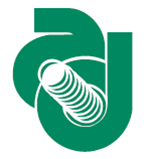Speaker
Description
Summary
Because of their superb energy resolution and detection efficiency, crystal scintillators are widely used in HEP experiments. Lead tungstate (PbWO4 or PWO) crystal calorimeter, for example, has played an important role for the discovery of the Higgs boson by the CMS experiment. One crucial issue, however, is crystal’s radiation damage in the severe radiation environment at the LHC. Cerium doped lutetium yttrium oxyorthosilicate (Lu2(1−x)Y2xSiO5:Ce or LYSO) crystal was chosen by the SuperB, Mu2e and COMET experiments to construct total absorption electromagnetic calorimeters. They are also proposed as the active medium for an LYSO/W Shashlik calorimeter which is one of the two options proposed for the CMS forward calorimeter upgrade. In his paper, we report an investigation of charged hadron induced radiation damage in crystal scintillators using 800 MeV proton beam at Los Alamos.
An LYSO crystal of 2.5×2.5×20 cm3, a CeF3 crystal of 2.22× 2.62×15 cm3 and four liquid scintillator based sealed quartz capillaries of 1 mm diameter and 6 cm long were irradiated to 3.3 × 1014, 1.4 × 1014 and 2.7 × 1014 p/cm2 respectively by 800 MeV protons. Optical and scintillation properties of crystal samples were characterized at Caltech before and about 80 days after the irradiation. Degradation of longitudinal transmittance during irradiation and recovery in short term (up to 3 hrs. immediate after irradiation) were monitored in situ for the two crystal samples at WNR of LANSCE using an optical fiber based spectrophotometer system. The emission weighted radiation induced absorption in the 20 cm long LYSO crystal is about 1 m-1 after the irradiation, indicating excellent radiation hardness of LYSO crystals against charged hadrons. The result of this experiment provides important information for understanding proton induced radiation damage in these crystals, which will be an important input for their use in future HEP experiments at both the energy and intensity frontiers and for the proposed MaRIE-class hard X-ray imaging [1,2].
[1] http://www.hep.caltech.edu/~zhu/talks/ryz_150128_Los_Alamos.pdf
[2] http://www.hep.caltech.edu/~zhu/talks/ryz_150311_LYSO.pdf

